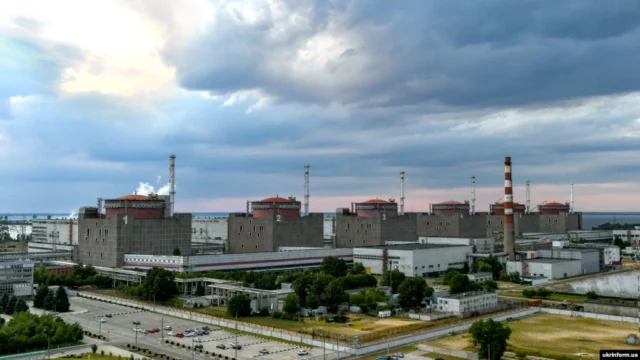Stephen Blank

From the outset of Moscow’s re-invasion of Ukraine in February 2022, nuclear threats and blackmail have been integral to Russia’s overall strategy. President Vladimir Putin’s declaration of the “special military operation” was accompanied by the usual blood-curdling threats, expecting that such loaded language would deter or inhibit Western reactions to his war (Kremlin.ru, February 24). Moreover, initial Russian naval activities on the eve of the war clearly simulated possible conventional and nuclear missile strikes on Europe and the United States for the same purposes (Nipp.org, June 15).
Putin and his entourage deeply believe in the efficacy of nuclear threats. Therefore, they continue to feign nuclear catastrophe in every way imaginable, believing they can intimidate the West into ceasing support for Ukraine. To date, in fact, several dozen such threats have been made, the most recent being the suspension of inspections as provided by the New START Treaty and the attempt to use Europe’s largest nuclear reactor, captured near Zaporizhzhia early in the war, as a shield behind which Russian forces can fire missiles into Ukraine at will (State.gov, accessed August 11; T.me/energoatom, August 7). Since taking the plant, Moscow has spurned repeated international entreaties from foreign governments to leave the reactor and turn it over to international supervision. The Kremlin’s failure to do so has generated suspicions that it seeks to provoke an incident whereby Ukrainian forces returning fire generate an international catastrophe, which Moscow can then spin in its favor (Nv.ua, August 7).
Similarly, Moscow illegally blocked US-requested inspections under the New START Treaty on the spurious grounds that sanctions and the COVID-19 pandemic prevented Russian inspectors from executing their responsibilities under the treaty (Mid.ru, August 8). In practice, inspections had been suspended due to the pandemic. However, this decision reflects not only the Kremlin’s frustration and resentment with the US but also represents another endeavor to raise the specter of uncontrolled nuclear weapons and a potential nuclear strike on either the Ukraine or the West. This approach also gives Russian officials another chance to spin the story to blame Washington and Kyiv for risking nuclear disasters by shelling the plant.
Several motives drive this behavior, and they overlap at times so that, in practice, some or all of these considerations are always present in the Kremlin’s nuclear threats. Furthermore, some motives have immediate or shorter-term purposes than do others that appear to be ingrained elements of Russia’s cultural repertoire, carried over from Soviet, if not Tsarist, times (The American Interest, December 23, 2015). First, and most immediate, is the fact that Putin’s Russia (not unlike the Mafia) is rife with intimidation culture. Under the Russian premier, Moscow believes that intimidating Europe from supporting Ukraine will eventually succeed in achieving the key strategic goal of fracturing the Western alliance. The Kremlin believes this is possible because it perceives Europe as decadent, weak and corrupt (see EDM, August 15). Following such logic, Ukraine will collapse since it is allegedly nothing more than a Western creation.
Second, nuclear, and other threats (e.g., breaking off relations with Washington if the US labels Russia a terrorist state), serve Moscow’s goals of deterring even greater levels of US support for Ukraine (TASS, August 12). Moscow evidently believes that it can do this with impunity because US President Joe Biden has made clear his refusal to provoke World War III (Whitehouse.gov, March 11). Some compellingly argue that this refusal may have encouraged the Kremlin’s escalations in rhetoric and action, including attempts at bringing Belarus into the war.
Finally, Moscow employs this intimidation almost daily because its monopoly over Russian media furnishes the basis for the government to make such threats to reinforce its domestic standing. Since at least Soviet times, Moscow has regularly done so to hide its own conventional and even nuclear inferiority—particularly during Nikita Khrushchev’s rule. This aims not only to rattle Western nerves but also to impress upon the domestic audience that Russia is not just a great power, demonstrating through exploitation of a suborned media that it is feared by everyone. The drive to be feared if it cannot be respected characterizes much of the Kremlin’s behaviour and pervades Russian culture. In this context, the nuclear feints and boasting also reflect the systematic mendacity that pervades Russian political life and the drive to impress foreigners with the façade of an all-powerful Russia, dating back to Tsarist times.
For these reasons, the recent nuclear threats are functional in the Russian political environment. They allow individual politicians and the state to appear strong and tough to national and foreign audiences. They also possess strategic utility in deterring foreign intervention in response to the aggression against Ukraine. Therefore, we should not realistically expect to see Moscow retreat from making them. After all, it is a Russian victory that Washington understands in its war games and elsewhere that nuclear threats become a realistic scenario if Moscow senses it is losing in Ukraine (War on the Rocks, March 22).
No comments:
Post a Comment